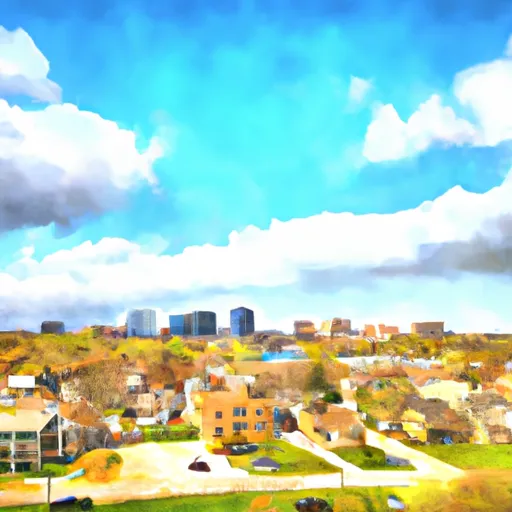-
 Snoflo Premium
Snoflo Premium
Get unlimited access to all our content
With no Ad interruptions! - Start Your Free Trial Login with existing account
Geneva
Eden Index
Climate
7.5
•
Recreation
3.5
•
Community
5.4
•
Safeguard
5.6/10

Geneva, Illinois is a charming city located in Kane County, with a population of about 22,000 people. The climate in Geneva is similar to the rest of the Midwest, with four distinct seasons. Summers are warm and humid, while winters are cold and snowy. Geneva is home to the Fox River, which is a significant hydrology constituent of the area. The river offers opportunities for kayaking, fishing, and boating. Geneva is also surrounded by several parks, including the Geneva Commons Park, Island Park, and Mill Creek Park, which offer hiking and biking trails, picnic areas, and playgrounds. The town boasts a vibrant downtown area with unique shops, restaurants, and cafes, making it an excellent destination for strolling and shopping.
What is the Eden Index?
The Snoflo Eden Index serves as a comprehensive rating system for regions, evaluating their desirability through a holistic assessment of climate health, outdoor recreation opportunities, and natural disaster risk, acknowledging the profound impact of these factors on livability and well-being.
Climate Health Indicator (CHI): 7.5
Geneva receives approximately
947mm of rain per year,
with humidity levels near 82%
and air temperatures averaging around
10°C.
Geneva has a plant hardyness factor of
5, meaning
plants and agriculture in this region thrive during a short period during spring and early summer. Most
plants will die off during the colder winter months.
By considering the ideal temperature range, reliable water supplies, clean air, and stable seasonal rain or snowpacks, the Climate Health Indicator (CHI) underscores the significance of a healthy climate as the foundation for quality living.
A healthy climate is paramount for ensuring a high quality of life and livability in a region, fostering both physical well-being and environmental harmony. This can be characterized by ideal temperatures, reliable access to water supplies, clean air, and consistent seasonal rain or snowpacks.
Weather Forecast
Streamflow Conditions
Upper Illinois
Area Rivers
Upper Illinois
Snowpack Depths
Upper Illinois
Reservoir Storage Capacity
Upper Illinois
Groundwater Levels
Recreational Opportunity Index (ROI): 3.5
The Recreational Opportunity Index (ROI) recognizes the value of outdoor recreational options, such as parks, hiking trails, camping sites, and fishing spots, while acknowledging that climate plays a pivotal role in ensuring the comfort and consistency of these experiences.
Access to outdoor recreational opportunities, encompassing activities such as parks, hiking, camping, and fishing, is crucial for overall well-being, and the climate plays a pivotal role in enabling and enhancing these experiences, ensuring that individuals can engage in nature-based activities comfortably and consistently.
Camping Areas
| Campground | Campsites | Reservations | Toilets | Showers | Elevation |
|---|---|---|---|---|---|
| Des Plaines State Conservation Area | 22 | 516 ft | |||
| Gratiot River County Park | None | 626 ft | |||
| South City (Gibson) Park | None | 741 ft | |||
| Natchez Trace State Park | 50 | 637 ft | |||
| Jurgens City Park | None | 658 ft | |||
| Sam Parr State Park | 80 | 524 ft | |||
| Gibson City Park | 4 | 731 ft | |||
| Desplaines Conservational Park | None | 553 ft | |||
| Fox Ridge State Park | 45 | 728 ft | |||
| Prairie Pines Campground | None | 730 ft |
Nearby Ski Areas
Catastrophe Safeguard Index (CSI):
The Catastrophe Safeguard Index (CSI) recognizes that natural disaster risk, encompassing floods, fires, hurricanes, and tornadoes, can drastically affect safety and the overall appeal of an area.
The level of natural disaster risk in a region significantly affects safety and the overall livability, with climate change amplifying these risks by potentially increasing the frequency and intensity of events like floods, fires, hurricanes, and tornadoes, thereby posing substantial challenges to community resilience and well-being.
Community Resilience Indicator (CRI): 5.4
The Community Resilience Indicator (CRI) recognizes that education, healthcare, and socioeconomics are crucial to the well-being of a region. The CRI acknowledges the profound impact of these elements on residents' overall quality of life. By evaluating educational resources, healthcare accessibility, and economic inclusivity, the index captures the essential aspects that contribute to a thriving community, fostering resident satisfaction, equity, and social cohesion.

